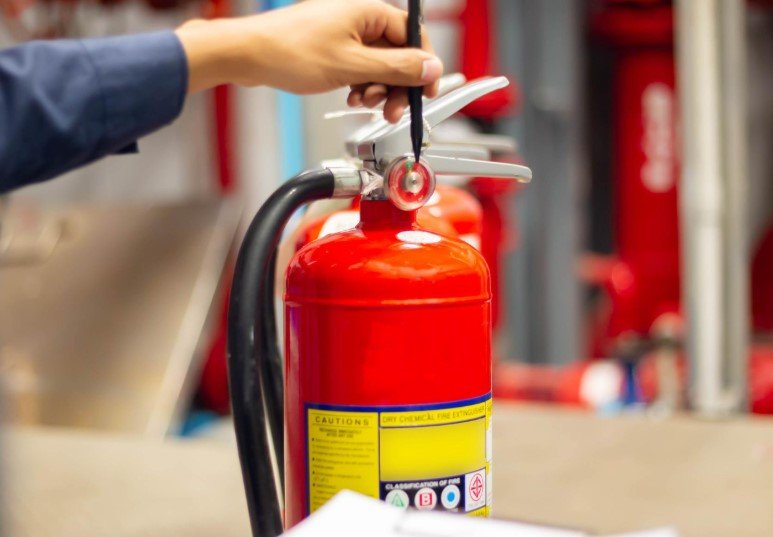Business owners across the globe are facing tougher fire safety rules in 2025, with new technologies stepping in to cut risks and legal headaches. From smart alarms to automatic suppression systems, these tools not only prevent fires but also shield companies from costly lawsuits by proving strong safety measures.
Rising Fire Threats in Modern Workplaces
Fires in business settings have spiked in recent years, driven by factors like electrical faults and crowded urban buildings. Data from global reports show that commercial fires caused over $10 billion in damages last year alone, with many cases linked to outdated safety setups.
This trend hits small and medium enterprises hardest, where tight budgets often delay upgrades. Experts note that liability claims surge when businesses fail to update systems, leading to fines and insurance denials. In one recent event, a warehouse fire in California highlighted how poor ventilation led to rapid smoke spread, resulting in multiple injuries and legal battles.
Regulations now demand more proactive steps, such as regular risk assessments. Without them, companies risk shutdowns or hefty penalties from authorities pushing for safer environments.

How Tech Reduces Legal Risks
Advanced fire safety tools help businesses meet strict standards and document compliance easily. By integrating sensors and real-time monitoring, these systems create audit trails that prove due diligence in court or during inspections.
One key benefit is lowering human error, which accounts for about 40 percent of fire-related incidents according to industry studies. Automated alerts notify managers instantly, allowing quick fixes before problems escalate.
- Smart detectors spot smoke early, reducing response time by up to 50 percent.
- Connected apps track maintenance logs automatically, simplifying insurance claims.
- Eco-friendly suppressants minimize damage while complying with green laws.
These features turn potential liabilities into strengths, as companies can show they prioritized safety.
Insurance providers are rewarding such upgrades with lower premiums. A recent survey found that businesses with modern systems saved an average of 15 percent on coverage costs.
Automatic Systems That Act Fast
Automatic fire suppression stands out as a game-changer, activating without human input to contain threats swiftly. These setups use gases or mists to douse flames, ideal for data centers and offices where water damage could ruin equipment.
In 2025, innovations like drone-assisted monitoring and AI-driven vents are gaining traction. For instance, systems that open escape routes on detection have cut evacuation times in tests by nearly a minute, saving lives and reducing injury claims.
Implementation is straightforward for most buildings, with retrofits possible in older structures. Costs start at around $5,000 for basic setups but pay off through avoided losses.
AI and IoT Boosting Protection
Artificial intelligence and Internet of Things devices are transforming fire safety into smart networks. AI analyzes patterns to predict risks, while IoT connects alarms to building controls for seamless responses.
Market projections estimate the fire protection sector will hit $118 billion by 2030, fueled by these tech advances. Businesses adopting them report fewer false alarms and better accuracy in threat detection.
| Technology | Key Benefit | Estimated Cost Savings |
|---|---|---|
| AI Sensors | Predicts fire risks early | Up to 30% on insurance |
| IoT Integration | Real-time monitoring | Reduces downtime by 25% |
| Drone Surveillance | Covers large areas quickly | Lowers inspection costs by 40% |
This table shows how these tools deliver practical value. Many firms start with pilot programs to test effectiveness before full rollout.
User feedback from recent installations praises the ease of use. One retail chain noted a 20 percent drop in safety incidents after switching to connected systems.
Training staff on these technologies ensures everyone knows how to respond, further cutting liability.
Green Solutions for Sustainable Safety
Eco-friendly fire tech is rising, aligning safety with environmental goals. Water-saving suppressants and low-emission systems reduce waste while meeting new green regulations.
These options appeal to businesses aiming for sustainability certifications, which can enhance reputation and attract customers. Studies indicate that green-certified companies face fewer liability suits due to perceived responsibility.
Adoption rates are climbing, with over 60 percent of new commercial builds incorporating such features in 2025.
Future Trends and Expert Advice
Looking ahead, experts predict more integration with building management systems, making fire safety part of everyday operations. Virtual reality training for emergencies is another emerging tool, helping staff prepare without real risks.
To stay ahead, business owners should consult local fire authorities for tailored advice. Regular audits keep systems current and compliant.
What do you think about these fire safety advancements? Share your experiences in the comments below and pass this article along to fellow business owners who might benefit from it.








